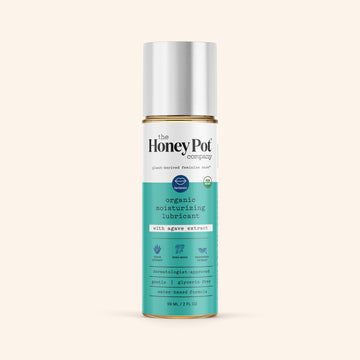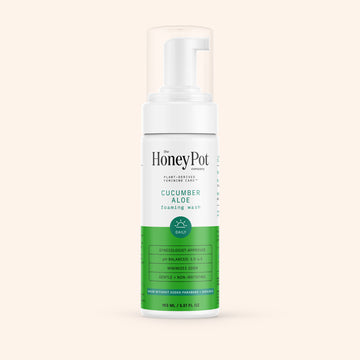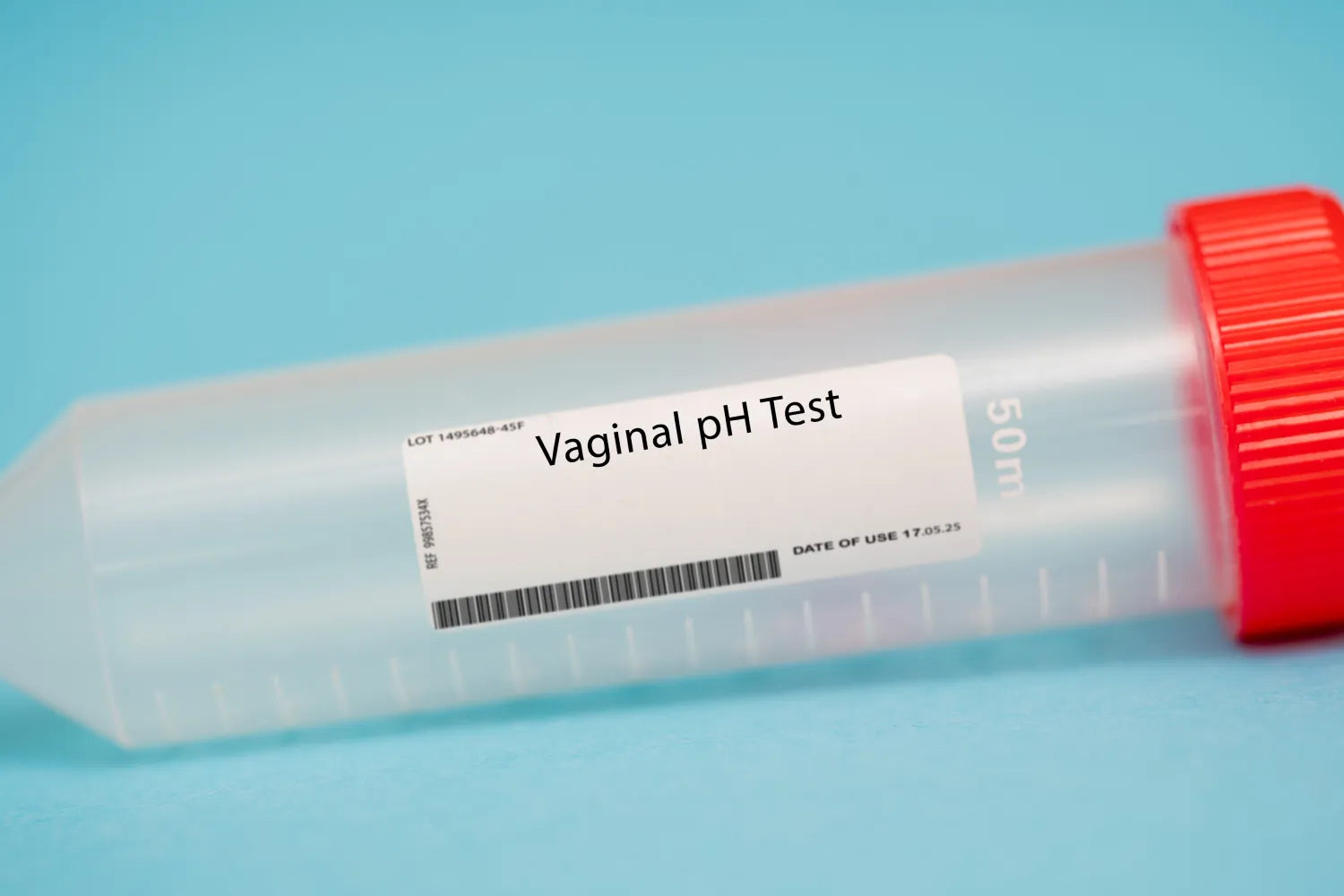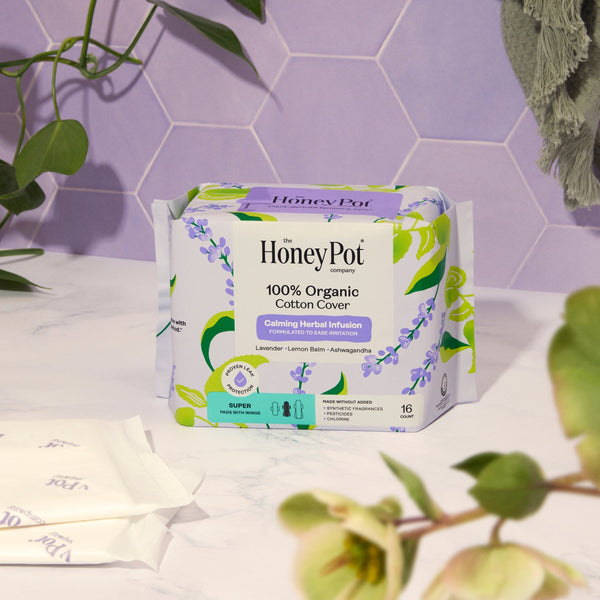If your vagina had a superpower, its origin story would begin with a mishap with battery acid, and its kryptonite would be drain cleaner. Sounds confusing? We’re talking about pH balance — the scale between acidity and alkalinity that categorizes everything. From the food you eat to the products you use, all have a ranking from a low to high pH.
Your vagina balances at a fairly acidic pH. Too much alkalinity may cause a vaginal pH imbalance. You may already be experiencing the effects of your pH being off or hoping to prevent future worries. Luckily, it’s easy to recognize when your honey pot is imbalanced, and you can make simple changes to get it back on track.
What Is Vaginal pH Balance?
You may be aware that your body is made up of bacteria, viruses, and fungi. A healthy balance of good and bad bacteria makes up the microbiome. To be healthy, you want a surplus of good bacteria to outnumber the harmful bacteria.
The good bacteria is symbiotic, meaning it promotes the wellness of your whole body. Some disease-carrying (pathogenic) bacteria coexist with the symbiotic bacteria. To ensure the tables don’t tip toward too many harmful organisms (a scenario called dysbiosis), you want to help promote a robust microbiome.
The body needs highly acidic stomach acid to help break down food, but the gut environment remains largely alkaline on the pH scale. On the other hand, a healthy vaginal pH is on the acidic end of the spectrum.
pH ranges from zero to 14, with zero being high in acid, 7 being neutral, and 14 being highly alkaline. The vagina settles around 3.5-5 when it’s well-balanced.
It needs a fairly acidic environment to prevent an overgrowth of pathogenic bacteria and organisms. For example, an overgrowth of disease-causing bacteria can cause vaginal infections like UTIs and yeast infections.
All kinds of unpleasant symptoms can alert you that you need a pH adjustment to get back to a healthy vaginal area. They ain’t pretty, but they get the message across.
Can You Tell If Your Vagina’s pH Balance Is Off?
Many factors can cause your normal vaginal pH to become too alkaline. Some of them are regular, everyday causes, while others are more serious. How do you know if your pH balance is off?
Any of these symptoms can be indicators that something is wrong down there:
- Unusual vaginal discharge
- Burning sensation when urinating, having intercourse, or using a tampon
- Vaginal odor that emanates from the vagina or fishy discharge
- Dryness or vaginal itching
- Altered discharge colors and textures (often green, gray, or textured like cottage cheese)
Nobody wants to experience these symptoms, but going through changes to your vaginal pH level is totally normal. Your vagina’s pH changes a bit every month, especially during menstruation. Outside of naturally occurring adjustments, there are habits you can follow to help maintain your pH and eliminate ugly symptoms. More about that soon!
What Could Be the Cause of Your pH Imbalance?
You may know your pH is off, but the root of the problem could stem from a number of causes.
Douching
Cleaning inside your vagina can be an overstep. It may flush out the good bacteria with the pathogenic ones, altering the vaginal flora. It’s normal to maintain a healthy balance that includes both, which is why douching is unnecessary. Instead, keep the external parts of your vulva hydrated and clean.
Menstruation
As mentioned, your period impacts your vaginal pH during menstruation. Blood is more alkaline than the vagina (a little over 7 on the scale, which is almost neutral). When period blood sits against the vagina in a pad or menstrual cup, it can alter the natural acidity of the environment so make sure to regularly change your pad or empty your menstrual cup.
Sexually Transmitted Infections
STIs like trichomoniasis, gonorrhea, chlamydia, or herpes can cause a higher pH because infections result in an overgrowth of harmful bacteria.
Bacterial Vaginosis
BV is an infection caused by an imbalance of vaginal microorganisms. Those with BV don’t have enough lactobacilli, which produces high amounts of acidic lactic acid.
Yeast Infections
Yeast infections are caused by an overgrowth of the Candida fungus. Yeast infections actually imbalance the vagina by causing it to become too acidic.
For a healthy vagina, you need to repair your vaginal pH balance. Luckily, there are at-home methods that can make a big difference.
How Do I Keep Things Alkaline?
Restoring your pH is all about creating a healthy vaginal environment. As you restore your microbiome, your whole body will be benefitted.
The microbiota populates in many parts of the body, so you can feel the effects of a thriving microbiome. You may notice a change in the wellness of your genitals, gut, skin, mouth, and respiratory tract.
If your vaginal pH levels are off, don’t worry. You can restore your vaginal health to tip-top shape by following a few simple steps to balance your pH.
Consume Probiotics
Your diet contributes in large part to your microbiome. Ever heard the phrase, “You are what you eat”? When it comes to your vaginal microbiome, aim to be a diet of fermented foods, probiotics, fiber, and leafy greens. Your diet has been shown to significantly impact the health of the microbiome as fast as 24 hours after making a change.
Probiotics feed the healthy bacteria. You can ingest probiotics through foods like yogurt, kimchi, kombucha, miso, and sauerkraut or through taking probiotic supplements.
Use Gentle Products
Be mindful of the products you use in and around your vagina. The aim of the game is kind-to-skin products that cater to sensitive skin.
Try to choose plant-derived, real ingredients instead of synthetics. Some products that can affect your pH balance include soaps, lubricants, menstrual products, body wash, body sprays, and underwear.
Stay Hydrated
Dehydration is another factor that influences vaginal pH. The more you sweat, whether from exercise or just hot weather, the more water your body needs.
Keep moisture in your body by drinking around three to four liters a day, depending on your body weight. Not only will you keep your vagina internally hydrated, but your overall health will improve.
Should You See a Doctor?
Fixing vaginal pH by regulating your levels can be done fairly easily by making intentional adjustments to your routine. However, sometimes a pH imbalance is caused by a serious issue. If you suspect your unbalanced pH is due to an infection or disease, make an appointment with your doctor to get checked out.
Your healthcare provider can diagnose the issue behind your imbalance. They may also recommend you use a test kit to get a reading on your vaginal pH.
The Tea on Balancing Your pH
It’s incredibly common to experience vaginal pH imbalances from time to time. Anything that gets near your vagina can influence its place on the acidity to alkaline spectrum. The trick is to be aware of what you’re exposing your vagina to.
Give your vulva some TLC by making smart choices about the ingredients you use and following good hygiene habits.
Sources:
The Human Microbiome and Its Impacts on Health | International Journal of Microbiology





